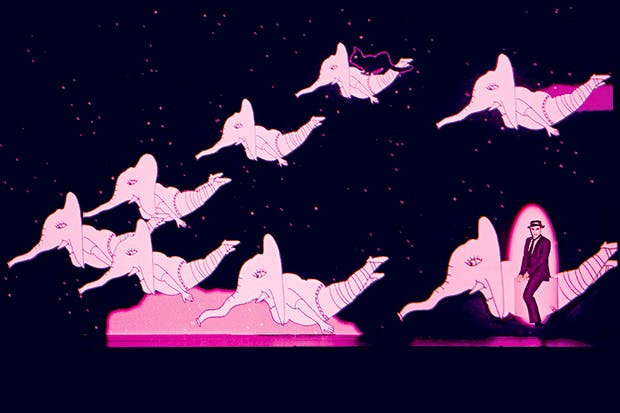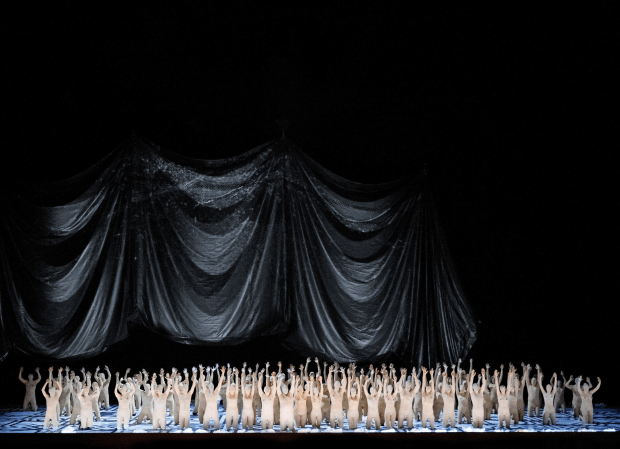After peaking at around the tenth instalment, birthday celebrations get progressively less interesting, for their subjects at least. I remember the lunch we held for my great-aunt Winnie’s 100th birthday. It was a jolly affair and she received the toast with a fine speech of thanks. When the cheering subsided, she delivered the speech again, verbatim.
Classical music nowadays seems largely to be propped up by birthday celebrations for people who couldn’t care less, mostly because they’re dead. For some decades, the planning of concert seasons has come down to whether the number of years since a composer died or was born has a zero on the end of it. Perhaps in 2050 we’ll celebrate the bicentenary of the centenary of Bach’s death, since 1850 was the first year the centenary business really established itself. Pop music is of course heading the same way (with its piffling double-digit numbers), but that’s small comfort really because, however you look at it, life should involve more than the sending of birthday cards and souvenirs to oneself.
In Cheltenham and one or two other picturesque market towns with broad pavements, such as Kensington, they’re celebrating Erik Satie’s 150th birthday. If one is suspicious about centennial commemorations in general, then one should be particularly suspicious about celebrating an artist like Satie. The culture of hushed reverence for one’s elders and betters governed the profession of classical music in Satie’s heyday scarcely less than it does today. And if Satie was clear about one thing, it was that he was against hushed reverence.
This was probably why, on first gaining notice in the Bohemian circles of Le Chat Noir cabaret, Satie styled himself not as a fusty old composer but as a ‘gymnopédist’. It’s a label that might get one lynched in modern Britain (and indeed, a gymnopédie, as Satie would have known from reading Rousseau’s suitably irreverent music dictionary, was a piece to which young Spartan girls were supposed to have danced naked). But in 1880s Montmartre the title acquired for Satie the raised eyebrow of mutual recognition among hipsters. He became acquainted with the humourist Alphonse Allais and, after moving on from Le Chat Noir to the Auberge du Clou, Claude Debussy. He challenged the director of the Paris Opéra to a duel simply because he wanted a meeting to discuss staging his opera there. A meeting was all he got.
Satie acquired his distaste for the musical establishment early on, describing the Paris Conservatoire as a ‘kind of local penitentiary’ in which he only served the full five-year sentence in order to reduce his military service to the minimum one year. There was no love lost. His junior piano teacher remembered Satie as the ‘laziest student in the Conservatoire’, and all his reports attest to the pupil’s singular lack of motivation and ambition. After a career built on making a virtue out of his limited talent, he recanted at the age of 39 and applied for a place as a mature student at the Schola Cantorum. ‘There is a musical language,’ he wrote, ‘and one must learn it.’ He passed, but with no flying colours, and soon slipped back into easy satire. In the sub-Bach chorale that prefaces the much-lauded collection Sports et divertissements, Satie claimed to have ‘put into it everything I know about boredom’.
Hipsters, for want of anything else to do, tend to celebrate their own and the hipper strands of contemporary music have long since claimed Satie. They cite as a landmark the first performance of Satie’s excruciating Vexations — which consists of a short, unappetising theme repeated 840 times — by John Cage and chums in 1963. Also much trumpeted is Brian Eno’s assertion that Satie was the first ‘ambient’ musician, partly on account of the way his best-known (and best) pieces — the three Gymnopédies and six Gnossiennes — do succeed in fading exquisitely into the background (they are staples of most ‘music to watch life pass you by with’ compilations), but also because of the Musique d’ameublement (‘Furniture music’), specifically intended as background music.
Why anyone should be celebrated for inventing the cultural poison that is Muzak is anyone’s guess. The omnipresence of musical backgrounds, whether chosen by department-store proprietors or Spotify subscribers, is one of the chief blights of modern society. It saps the life out of music — turning it from a form of social exchange into a kind of asocial, semi-onanistic continuum — and saps the music out of life: the glazed eyes of the headphone-wearing majority have turned our urban centres into giant dentists’ waiting rooms.
But being ‘ambient’ is Satie’s least sin. Far graver is that he represents music’s first decisive turn toward irony, toward the idea that a piece’s most interesting quality resides less in the music than in its witty title. It was in this context that the mediocrity of Satie’s talent really excelled, because irony works by discouraging us from believing what we’re hearing. More than Muzak, the predominance of irony is our chief modern malaise. Its ever-decreasing spiral flourishes in the arts; more so, arguably, in political life where incredulous distrust greets anyone who seems to mean what they say.
So when we’re dutifully watching Satie blow out his 150 birthday candles, to the adoring cheers of a musical establishment he professed to despise, perhaps we might be excused a wry smile of our own.
Got something to add? Join the discussion and comment below.
Get 10 issues for just $10
Subscribe to The Spectator Australia today for the next 10 magazine issues, plus full online access, for just $10.










Comments
Don't miss out
Join the conversation with other Spectator Australia readers. Subscribe to leave a comment.
SUBSCRIBEAlready a subscriber? Log in